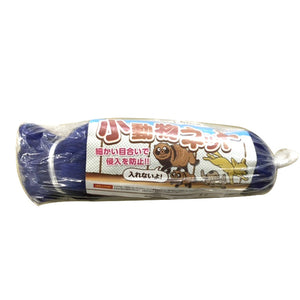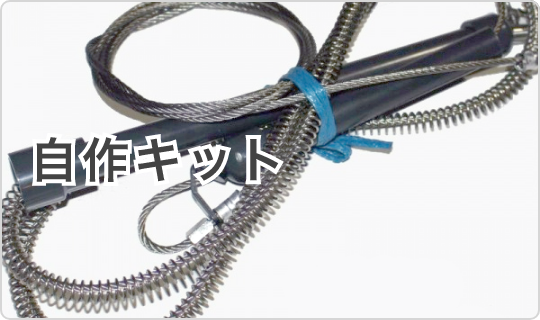Earlier this month, a swine cholera virus was detected at a pig farm in Gifu City for the first time in 26 years in Japan. Swine fever is a disease that infects pigs and wild boars, and is characterized by high contagiousness and high fatality rate. * Swine fever does not infect humans.
In addition, it has been confirmed that this swine fever is not the African swine fever outbreak in China. In order to avoid confusion due to unfounded rumors, we will also guide you in this article.
The story so far
First of all, it was confirmed that a farmed pig died on the 3rd of this month, and a prefectural inspection was carried out, but initially swine fever was denied.
For that reason, it was considered to be a follow-up observation for the time being, but when the situation did not settle down, the prefecture conducted another test on the 7th, and the result was that swine cholera could not be denied. In response to this, as a result of a detailed examination at a national research institute on the 8th, the infection of swine fever was confirmed.
Since then, infection has also been confirmed in wild boars near pig farms. The first one died on the 13th in a waterway about seven kilometers northwest of the farm. A second was found dead on the 15th in a residential yard about 3.5 kilometers northeast.
The 3rd to 5th animals found on the 18th were found dead in fields and parks about 7 to 9 kilometers away. Both are found within a radius of 10 kilometers from the pig farm.
September 29 postscript: Genetic testing of a dead wild boar in the mountains of Chindong, the city, about 8 km northwest of the pig farm, was positive. This is the 7th wild boar infection.
Postscript on October 5: Confirmation of further infection of wild boars continues, currently the 12th. The 12th was captured alive in the mountains about eight kilometers northwest of the farm.
Survey on wild boar also started
Due to concerns about the expansion of the infected area due to the movement of infected wild boars, Gifu City and the City Hunting Association began an ecological survey of wild boars in the surrounding mountains from the 22nd.
We are investigating wild boar paths and feeding tracks to identify their habitat.
In addition, Gifu Prefecture and the Prefectural Hunting Association are conducting surveys and captures in areas around Gifu City where hog cholera-infected wild boar carcasses were found, with the aim of ascertaining the infection status of wild boars and reducing the number of wild boars. is starting on the 25th.
Symptoms of swine fever
Infection spreads to other individuals through direct contact with an infected individual or through contact with their bodily fluids or excreta.
Because it is highly contagious, infection can also be established through indirect contact with droplets or attachments of bodily fluids or excrement. In the case of pigs, infection initially causes fever, anorexia, crouching, and loss of energy.
Later, conjunctivitis causes eye discharge, swollen lymph nodes, breathing problems, and constipation followed by diarrhea. After that, neurological symptoms such as ataxia and hindquarters (rear part of the body) paralysis occur, and purpura can be seen on the auricle, tail, lower abdomen, etc., and finally, it becomes difficult to stand up and the patient dies.
If the period from onset to death is within 10 to 20 days, it is called acute swine fever, and if it repeats onset and recovery and then dies within about 30 days, it is called chronic swine fever. There is also late-onset classical swine fever that lasts more than half a year.
What if swine fever is suspected? Measures against wild animals such as wild boars
First, if pigs, etc. are determined to be affected animals or animals suspected of being affected, the area within a 3-kilometer radius centered on the outbreak farm will be an area where the movement of livestock, etc. is prohibited (movement restriction area).
Owners of pigs, etc. in movement-restricted areas should refrain from going in and out of people other than those concerned, thoroughly disinfect, and if contact between wild boars and pigs is expected, the entrance and exit of livestock barns to prevent contact. You will be instructed to install fences.
In addition, infection confirmation tests in wild animals are conducted by prefectures. Specifically, specimens will be collected for antigen tests and serum antibody tests on wild boar carcasses in restricted movement areas and wild boars captured with the cooperation of hunting clubs.
If a positive result is confirmed by these tests, the point where the wild boar was secured will be disinfected and traffic will be restricted or blocked. In addition, a warning will be issued to pig owners within a 10-kilometer radius from the point where the wild boar was found, and the presence or absence of abnormalities in the pigs being raised will be checked.
What if you find a dead wild boar?
If you find a dead wild boar in Gifu Prefecture, please contact the office below. When contacting us, please tell us the detailed location and the number of dead animals. Also, do not touch dead boars.
|
Department in charge |
location |
telephone number |
Municipality in charge |
|---|---|---|---|
|
Gifu Regional Environment Office Environmental Conservation Section |
〒500-8570 Gifu prefectural office |
058-272-1111 (Extension 3242) |
Gifu City, Hashima City, Kakamigahara City, Yamagata City, Mizuho City, Motosu City, Ginan Town, Kasamatsu Town, Kitakata Town |
|
Seino Prefectural Office Environment Division Environmental Conservation Section |
〒503-0838 Seino General Government Building |
0584-73-1111 |
Ogaki City, Kaizu City, Yoro Town, Tarui Town, Sekigahara Town, Kobe Town, Wanouchi Town, Anpachi Town |
|
Ibi Prefectural Office Environment Division Environmental Conservation Section |
〒501-0603 Ibi General Government Building |
0585-23-1111 |
Ibigawa Town, Ono Town, Ikeda Town |
|
Environmental Conservation Section, Environment Division, Kamo Prefectural Office |
〒505-8508 Kamo General Government Building |
0574-25-3111 |
Minokamo City, Kani City, Sakahogi Town, Tomika Town, Kawabe Town, Shichiso Town, Yaotsu Town, Shirakawa Town, Higashishirakawa Village, Mitake Town |
|
Environmental Conservation Section, Environment Division, Chuno Prefectural Office |
〒501-3756 Chuno General Government Building |
0575-33-4011 |
Mino City, Seki City, Gujo City |
|
Tono Prefectural Office Environment Division Environmental Conservation Section |
〒507-8708 Tono Western General Government Building |
0572-23-1111 |
Tajimi City, Mizunami City, Toki City |
|
Ena Prefectural Office Environment Division Environmental Conservation Section |
〒509-7203 Ena General Government Building |
0573-26-1111 |
Nakatsugawa City, Ena City |
|
Environmental Conservation Section, Environment Division, Hida Prefectural Office |
〒506-8688 Hida General Government Building |
0577-33-1111 |
Takayama City, Hida City, Gero City, Shirakawa Village |

 箱罠
箱罠
 くくり罠
くくり罠
 パーツ類
パーツ類
 電気柵
電気柵
 自作キット
自作キット
 防獣グッズ
防獣グッズ
 監視カメラ
監視カメラ















 box trap
box trap
 tying trap
tying trap
 enclosure trap
enclosure trap
 Prevention and avoidance goods
Prevention and avoidance goods
 electric fence
electric fence
 trap surveillance camera
trap surveillance camera
 transportation goods
transportation goods
 Trap detection sensor
Trap detection sensor
 hunting supplies
hunting supplies
 hunting books
hunting books
 Anti-bird goods
Anti-bird goods
 Agricultural materials/machinery
Agricultural materials/machinery
 boar
boar
 deer
deer
 Kyon
Kyon
 monkey
monkey
 raccoon
raccoon
 Badger
Badger
 palm civet
palm civet
 raccoon dog
raccoon dog
 nutria
nutria
 mouse or rat
mouse or rat
 Mole
Mole
 bear
bear
 pigeon
pigeon
 Crow
Crow







